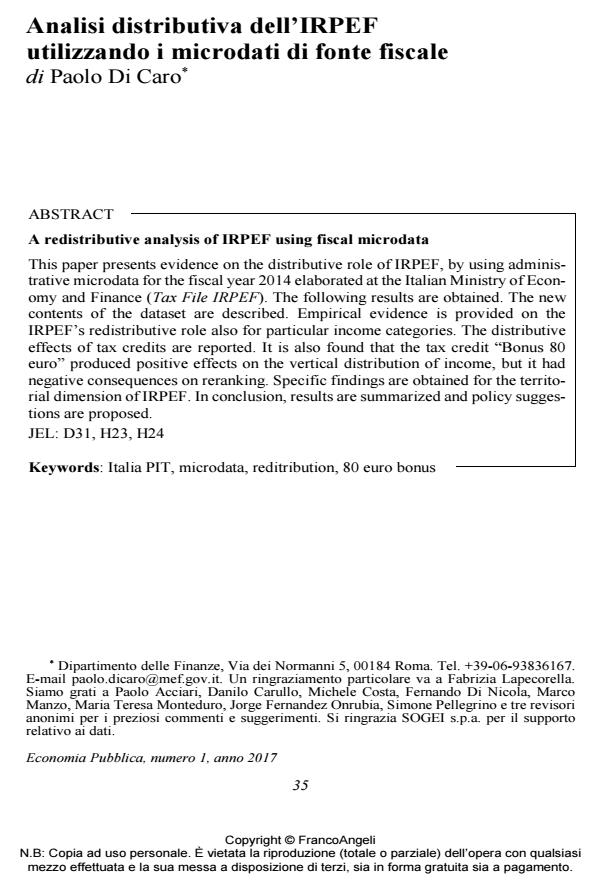Analisi distributiva dell’IRPEF utilizzando i microdati di fonte fiscale
Titolo Rivista ECONOMIA PUBBLICA
Autori/Curatori Paolo Di Caro
Anno di pubblicazione 2017 Fascicolo 2017/1
Lingua Italiano Numero pagine 25 P. 35-59 Dimensione file 307 KB
DOI 10.3280/EP2017-001002
Il DOI è il codice a barre della proprietà intellettuale: per saperne di più
clicca qui
Qui sotto puoi vedere in anteprima la prima pagina di questo articolo.
Se questo articolo ti interessa, lo puoi acquistare (e scaricare in formato pdf) seguendo le facili indicazioni per acquistare il download credit. Acquista Download Credits per scaricare questo Articolo in formato PDF

FrancoAngeli è membro della Publishers International Linking Association, Inc (PILA)associazione indipendente e non profit per facilitare (attraverso i servizi tecnologici implementati da CrossRef.org) l’accesso degli studiosi ai contenuti digitali nelle pubblicazioni professionali e scientifiche
This paper presents evidence on the distributive role of IRPEF, by using administrative microdata for the fiscal year 2014 elaborated at the Italian Ministry of Economy and Finance (Tax File IRPEF). The following results are obtained. The new contents of the dataset are described. Empirical evidence is provided on the IRPEF’s redistributive role also for particular income categories. The distributive effects of tax credits are reported. It is also found that the tax credit "Bonus 80 euro" produced positive effects on the vertical distribution of income, but it had negative consequences on reranking. Specific findings are obtained for the territorial dimension of IRPEF. In conclusion, results are summarized and policy suggestions are proposed.
Parole chiave:Italia PIT, microdata, reditribution, 80 euro bonus
Jel codes:JEL: D31, H23, H24
- Do Details Matter? An Analysis of Italian Personal Income Tax Martino Tasso, in SSRN Electronic Journal /2020
DOI: 10.2139/ssrn.3745912 - The contribution of tax-benefit instruments to income redistribution in Italy Stefano Boscolo, in ECONOMIA PUBBLICA 2/2022 pp.181
DOI: 10.3280/EP2022-002001
Paolo Di Caro, Analisi distributiva dell’IRPEF utilizzando i microdati di fonte fiscale in "ECONOMIA PUBBLICA " 1/2017, pp 35-59, DOI: 10.3280/EP2017-001002